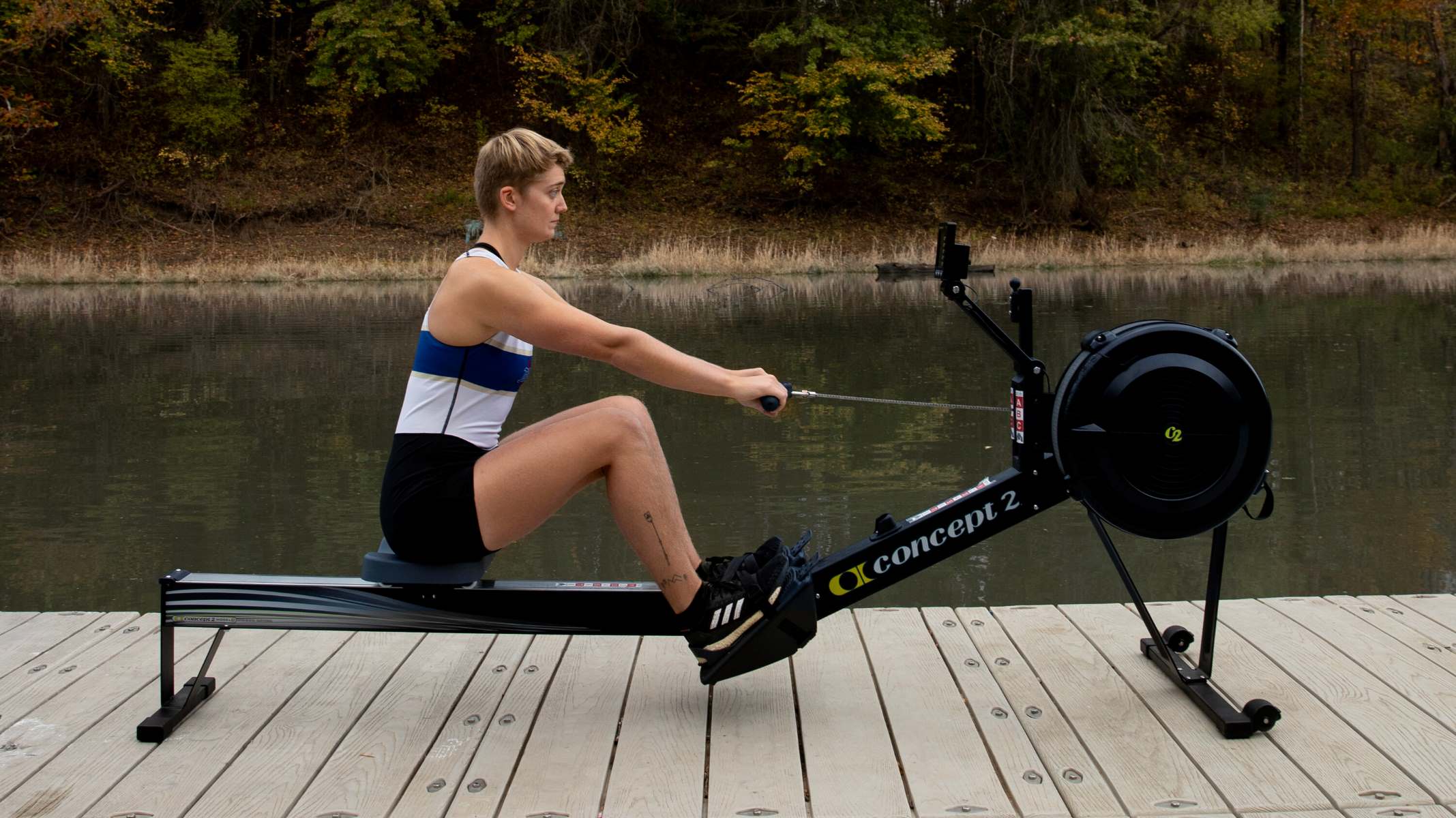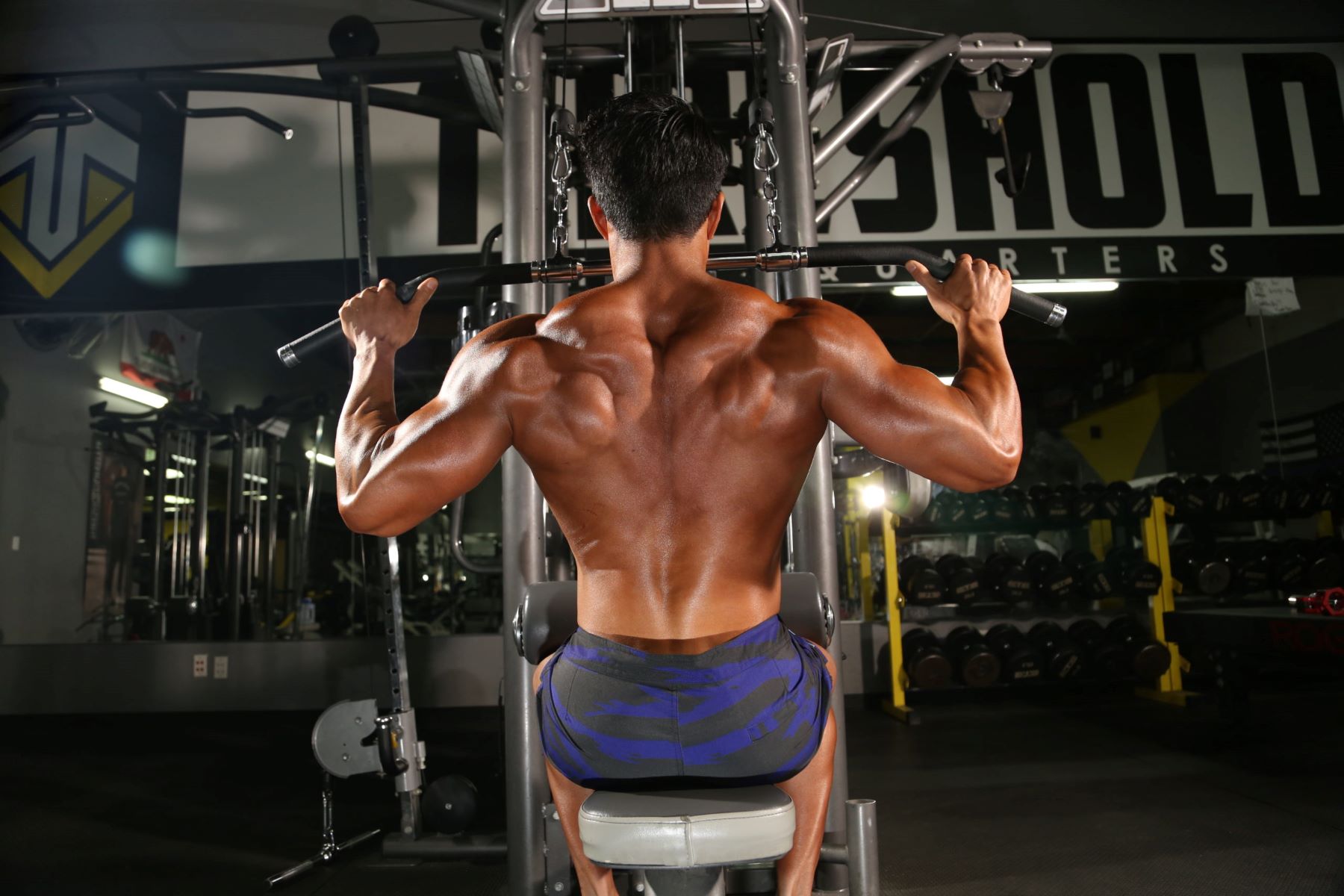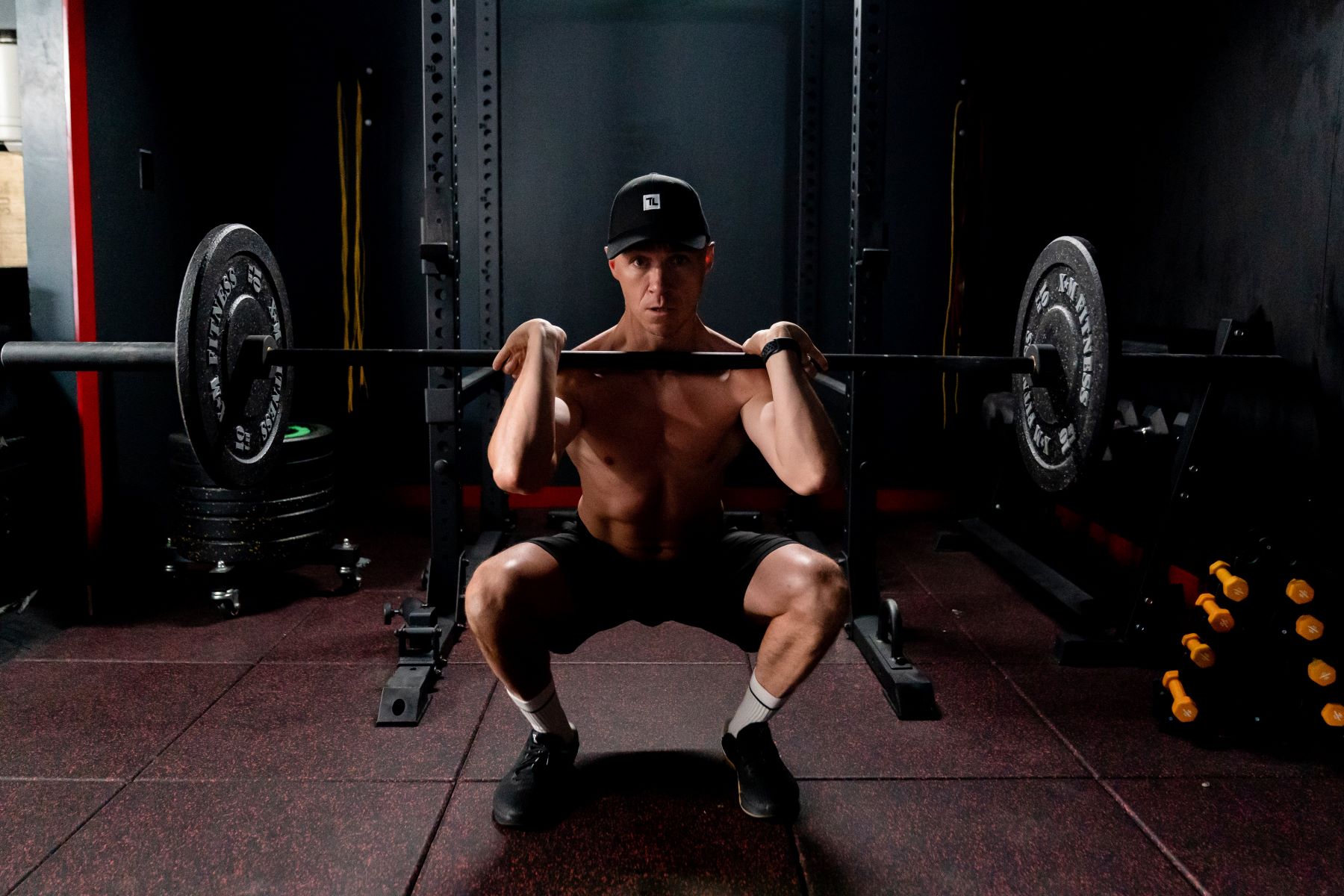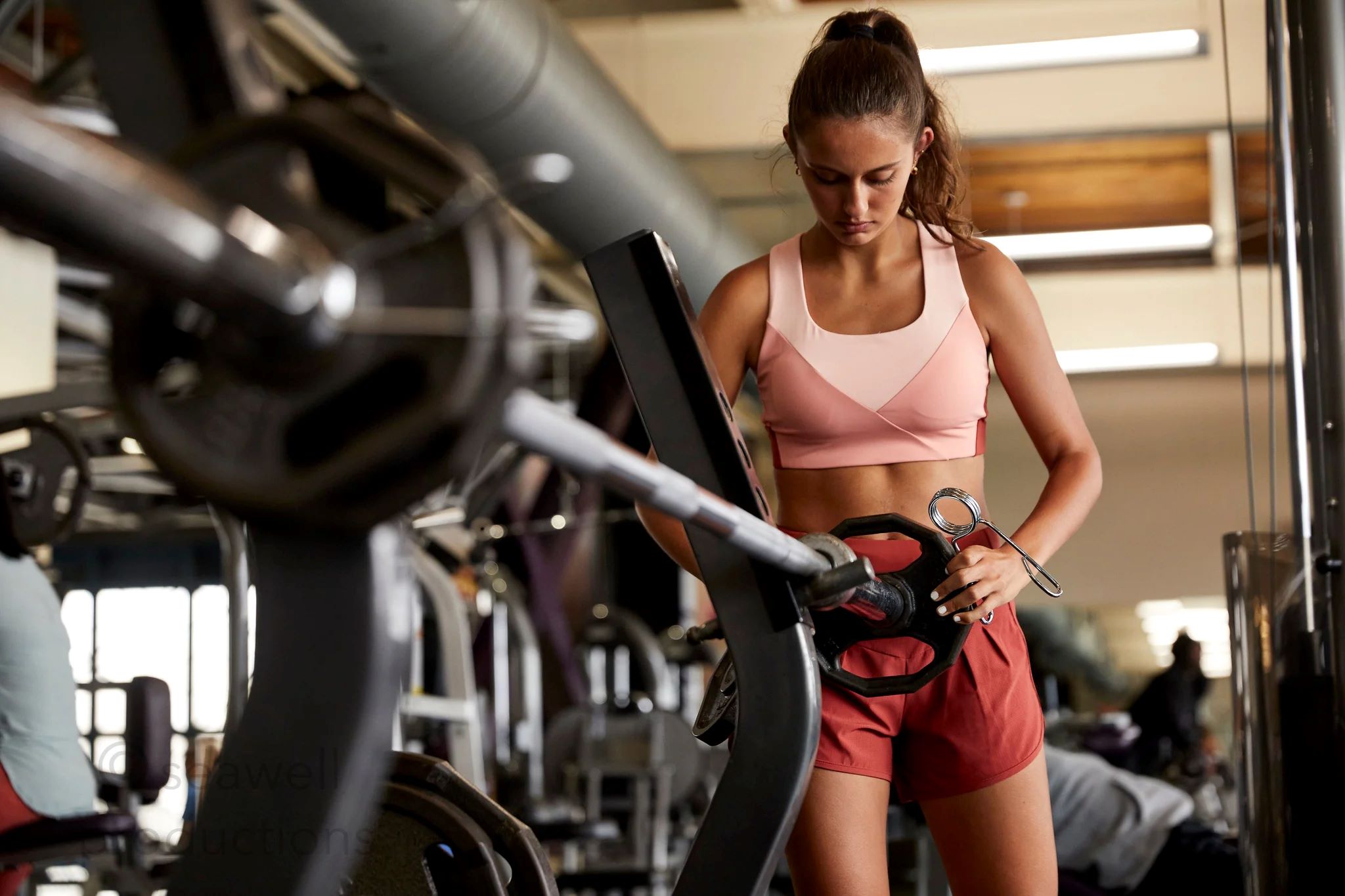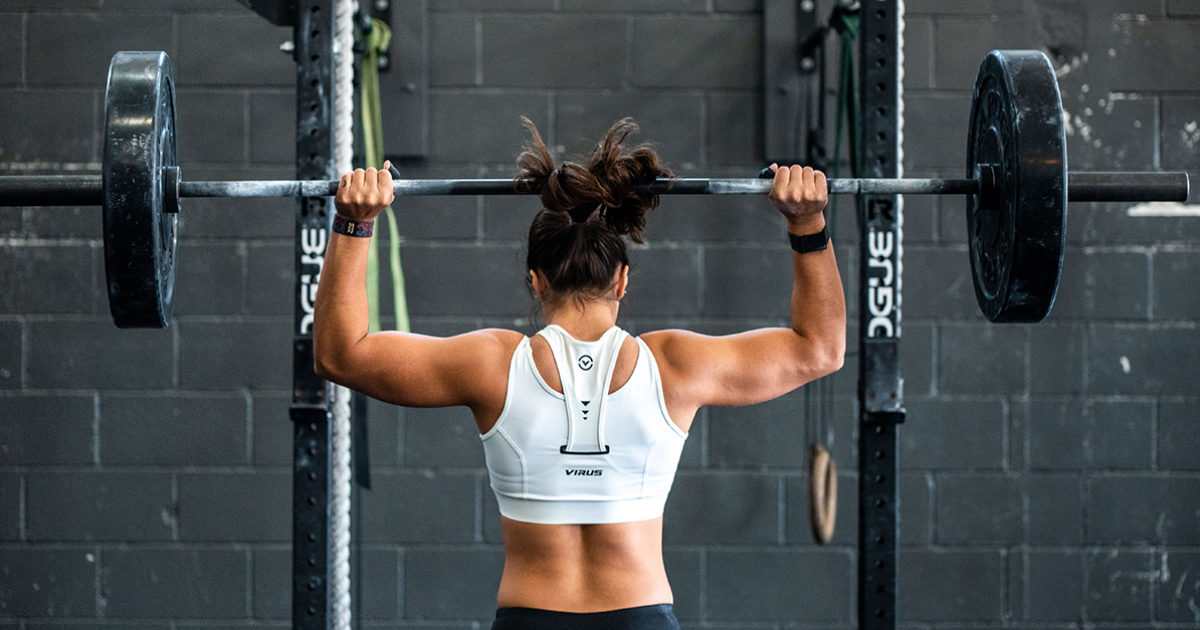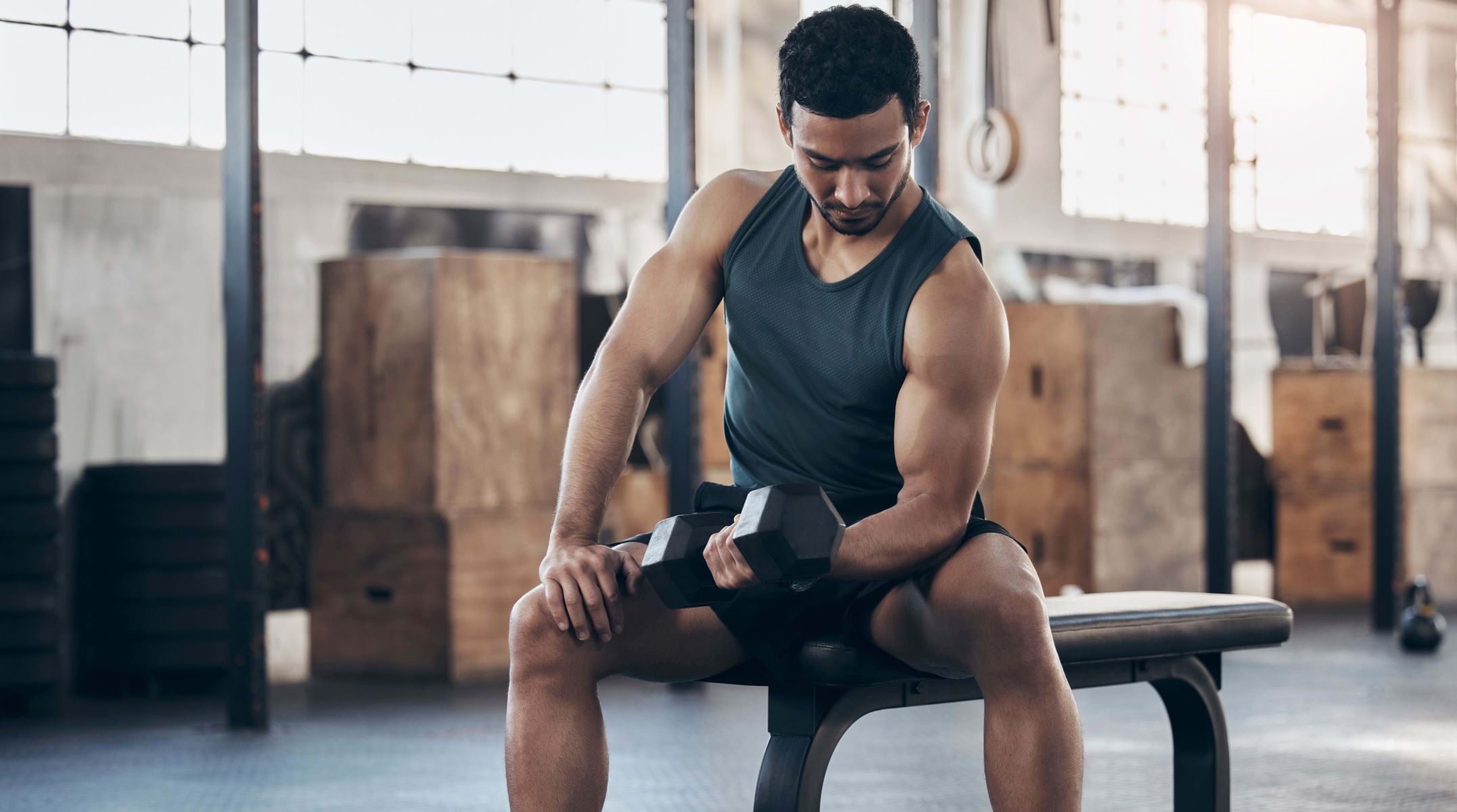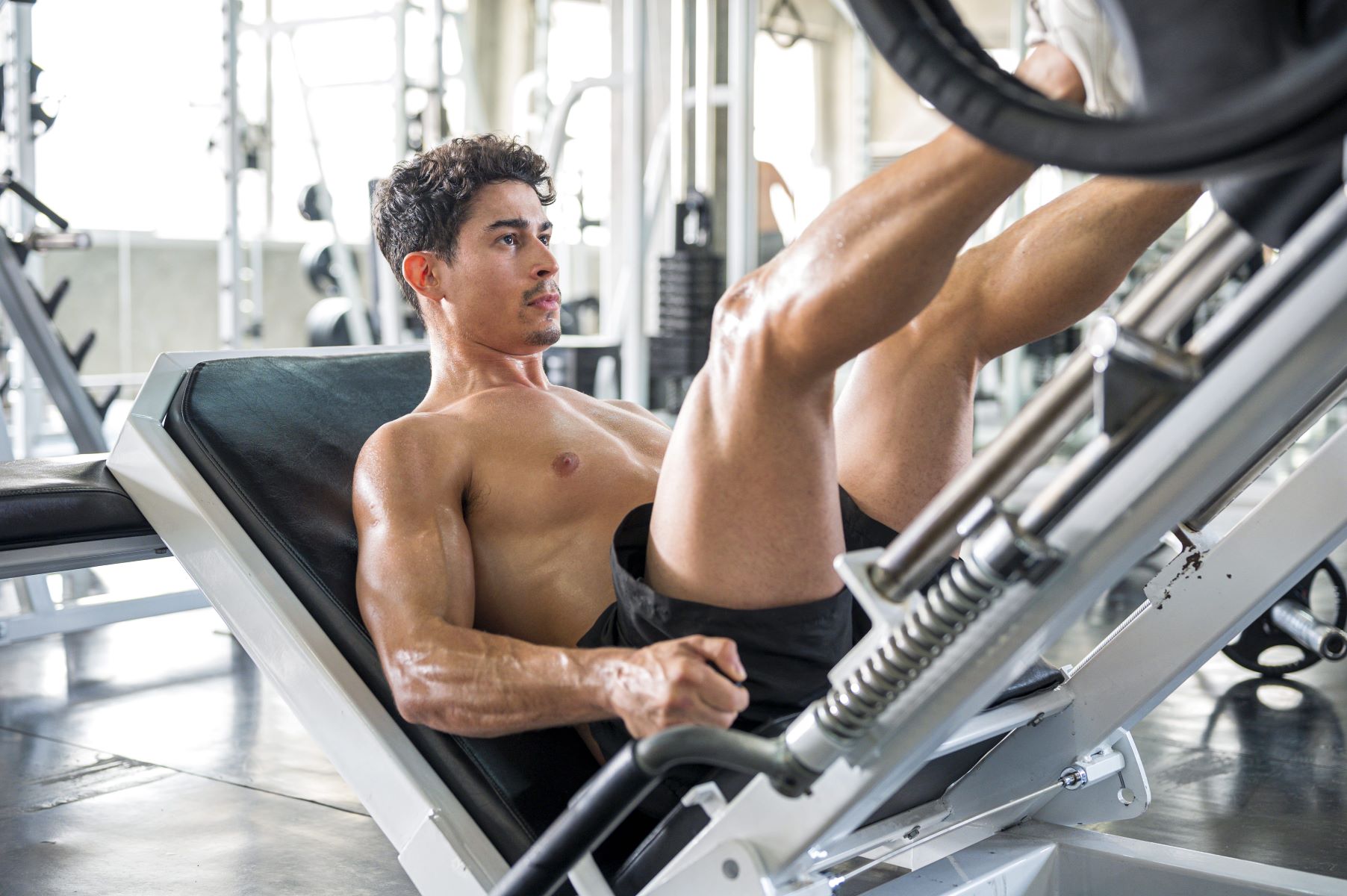

Featured
What Is Push-Pull Workout
Modified: August 21, 2023
Discover the benefits of a push-pull workout routine and how it can help you achieve your fitness goals. Get featured with this effective training method.
Introduction
When it comes to maximizing your fitness gains, incorporating a well-rounded workout routine is crucial. One popular approach is the push-pull workout. This training method focuses on dividing your exercises into two main categories: pushing movements and pulling movements.
By strategically combining these exercises, you can target multiple muscle groups while giving each muscle ample time to recover. In this article, we will delve into the details of the push-pull workout, exploring its definition, benefits, and how to create an effective routine.
The concept of push-pull workouts is rooted in the principle of opposing muscle actions. Push exercises involve movements where you are pushing weight away from your body, such as pushing a barbell during a bench press. On the other hand, pull exercises involve movements where you are pulling weight towards your body, like pulling a cable during a rowing exercise.
By alternating between these two types of movements, you allow the corresponding muscles to work in harmony and recover efficiently. This not only promotes muscle balance and symmetry but also reduces the risk of imbalances that can lead to injuries or stagnant progress.
One of the major benefits of a push-pull workout is its time efficiency. Since you’re grouping exercises based on muscle actions, you can target multiple muscle groups in a single session, saving time and allowing for more overall volume in your training. Additionally, by focusing on compound movements that engage multiple muscle groups, you can maximize your efforts and progress faster toward your fitness goals.
A push-pull workout is suitable for both beginners and experienced individuals looking to switch up their routine. Not only does it optimize muscle recovery, but it also provides versatility in terms of exercise selection. Whether you prefer free weights, machines, or bodyweight exercises, there are plenty of options available to incorporate into your push-pull routine.
In the following sections, we will explore push exercises and pull exercises in more detail, providing examples of each and explaining their specific benefits. We will also provide a sample push-pull workout routine and offer some tips to ensure you get the most out of your training sessions.
Definition of push-pull workout
A push-pull workout is a training method that focuses on dividing exercises into two main categories: pushing movements and pulling movements. The goal is to alternate between these two types of movements to target different muscle groups while allowing adequate recovery time. This approach not only optimizes muscle balance and symmetry but also enhances overall efficiency and progress in your workouts.
Push exercises involve movements where you are pushing weight away from your body. This includes exercises like bench press, shoulder press, and push-ups. These exercises primarily target muscles such as the chest, shoulders, and triceps. The pushing motion engages these muscles while also working on secondary muscle groups, such as the deltoids and trapezius, to support the movement.
Pull exercises, on the other hand, involve movements where you are pulling weight towards your body. This category includes exercises like rows, pull-ups, and lat pulldowns. Pulling exercises mainly target the muscles of the back, biceps, and forearms. In addition to these primary muscles, secondary muscle groups like the rhomboids and rear deltoids are also engaged during these movements.
The fundamental principle behind the push-pull workout is to alternate between pushing and pulling movements during your training sessions. This allows you to work different muscle groups while giving each muscle group adequate rest and recovery time. By incorporating compound exercises, which engage multiple muscle groups simultaneously, you can maximize the effectiveness and efficiency of your workouts.
The beauty of the push-pull workout lies in its versatility. You can customize your routine to suit your individual goals and preferences. Whether you are a beginner looking to build strength and muscle or an experienced lifter wanting to switch up your routine, the push-pull method can be tailored to your specific needs.
Moreover, the push-pull workout offers a balanced approach to training. By addressing both pushing and pulling movements, you can prevent muscle imbalances and reduce the risk of injuries. Imbalances between opposing muscle groups, such as the chest and back, can lead to poor posture, decreased performance, and potential injuries. The push-pull workout helps counteract these imbalances by ensuring that both muscle groups are equally developed and strengthened.
In the next sections, we will delve deeper into the specific benefits of the push-pull workout and explore some sample exercises for both pushing and pulling movements.
Benefits of push-pull workout
The push-pull workout offers numerous benefits that can enhance your training sessions and help you achieve your fitness goals. Let’s explore the key advantages of incorporating this training method into your routine:
- Efficient use of time: Push-pull workouts allow you to target multiple muscle groups in a single session, saving you time at the gym. By alternating between push and pull exercises, you can work different muscle groups while giving each group adequate time to recover.
- Muscle balance and symmetry: By focusing on both pushing and pulling movements, the push-pull workout promotes muscle balance and symmetry. This helps prevent muscle imbalances, which can lead to poor posture and increased risk of injuries.
- Increased overall volume: Incorporating compound exercises that engage multiple muscle groups stimulates greater overall muscle activation. This can lead to increased muscle growth and strength gains, as well as improved muscular endurance.
- Versatility in exercise selection: The push-pull workout allows for a wide range of exercise options. Whether you prefer free weights, machines, or bodyweight exercises, there are numerous choices available to target your pushing and pulling movements.
- Enhanced strength and power: By incorporating both pushing and pulling exercises, the push-pull workout improves overall upper body strength and power. This is especially beneficial for athletes participating in sports that require explosive movements, such as sprinting or throwing.
- Injury prevention: By addressing both the agonist and antagonist muscle groups, the push-pull workout helps maintain muscle balance and reduces the risk of overuse injuries. Strengthening both the pushing and pulling muscles creates a more stable and resilient musculoskeletal system.
- Mental focus and engagement: The alternating nature of push-pull workouts requires mental focus and engagement, as you switch between different types of movements and muscle groups. This can enhance overall mind-muscle connection and increase the effectiveness of your workouts.
These benefits highlight the effectiveness and versatility of the push-pull workout. By incorporating this training method into your routine, you can optimize your time, develop a well-rounded physique, and improve overall strength and power. In the following sections, we will dive into the specific exercises for both pushing and pulling movements, as well as provide a sample push-pull workout routine.
Push Exercises
Push exercises are an essential component of the push-pull workout routine. These movements primarily involve pushing weight away from your body, targeting muscles such as the chest, shoulders, and triceps. By incorporating various push exercises, you can develop upper body strength, enhance muscle definition, and improve overall pushing power.
Here are some popular push exercises that you can include in your push-pull workout routine:
- Bench Press: The bench press is a classic compound exercise that targets the chest, shoulders, and triceps. It can be performed with a barbell or dumbbells, allowing you to adjust the weight based on your strength level and training goals.
- Overhead Press: The overhead press primarily targets the shoulders, engaging the deltoids and the triceps. This exercise can be performed with a barbell, dumbbells, or even a seated machine press.
- Push-Ups: Push-ups are a versatile bodyweight exercise that target the chest, shoulders, and triceps. They can be modified to suit different fitness levels, making them a suitable option for beginners and advanced individuals alike.
- Dumbbell Flyes: Dumbbell flyes isolate the chest muscles and provide a great stretch and contraction. This exercise can help build a fuller, more defined chest.
- Dips: Dips primarily target the chest and triceps. They can be performed on parallel bars or using a dip machine, and they are an excellent compound exercise for upper body strength and stability.
- Shoulder Press: Shoulder presses specifically target the deltoid muscles, providing strength and definition to the shoulders. They can be performed with dumbbells, a barbell, or a seated shoulder press machine.
- Tricep Extensions: Tricep extensions place direct emphasis on the triceps, helping to build strength and size in the back of the arms. They can be performed with dumbbells, cables, or a barbell.
When incorporating push exercises into your push-pull workout, it’s important to choose exercises that target your desired muscle groups while considering your fitness level and equipment availability. Aim for a balanced selection of exercises that provide adequate stimulation to the chest, shoulders, and triceps.
Remember to perform each exercise with proper form and technique, gradually increasing the weight and intensity as your strength and proficiency improve. Resting between sets and incorporating progressive overload principles will help you continually challenge your muscles and promote growth.
In the next section, we’ll explore pull exercises, which complement push exercises in the push-pull workout routine.
Pull Exercises
Pull exercises are a fundamental component of the push-pull workout routine. These movements primarily involve pulling weight towards your body, targeting muscles such as the back, biceps, and forearms. By incorporating a variety of pull exercises, you can develop upper body strength, improve posture, and enhance overall pulling power.
Here are some common pull exercises that you can include in your push-pull workout routine:
- Rows: Rows are a versatile exercise that target the back muscles, including the latissimus dorsi (lats), rhomboids, and trapezius. There are various row variations to choose from, such as barbell rows, dumbbell rows, and cable rows.
- Pull-Ups: Pull-ups are an excellent bodyweight exercise that primarily targets the upper back and biceps. They can be performed with an overhand grip (pronated) or an underhand grip (supinated) to engage different muscle groups.
- Lat Pulldowns: Lat pulldowns are a machine-based exercise that targets the latissimus dorsi and other muscles of the back. This exercise provides similar benefits to pull-ups and can be a suitable alternative, especially for beginners or those with limited upper body strength.
- Hammer Curls: Hammer curls primarily target the biceps and forearms. They can be performed with dumbbells or cables, and they provide a different angle of contraction compared to traditional bicep curls.
- Deadlifts: Deadlifts are a compound exercise that engage multiple muscle groups, including the back, glutes, hamstrings, and forearms. They are a fantastic exercise for building overall strength and power.
- Face Pulls: Face pulls are an effective exercise for targeting the rear deltoids, upper back, and rotator cuff muscles. This exercise helps improve posture and strengthen the muscles involved in scapular retraction.
- Reverse Flyes: Reverse flyes isolate the posterior deltoids and upper back muscles. They can be performed with dumbbells or cables and are great for strengthening the muscles that support good posture.
When selecting pull exercises for your push-pull workout routine, it’s important to choose exercises that effectively target the back, biceps, and forearms while considering your fitness level and equipment availability. Incorporating a mix of compound and isolation exercises can provide a well-rounded approach to targeting these muscle groups.
As with push exercises, it’s crucial to maintain proper form and technique when performing pull exercises. Gradually increase the weight and intensity as your strength and proficiency improve, and allow for adequate rest between sets to optimize recovery and muscle growth.
In the next section, we’ll explore a sample push-pull workout routine that incorporates both push and pull exercises.
Sample Push-Pull Workout Routine
Creating an effective push-pull workout routine involves combining a variety of push and pull exercises into a structured and balanced program. Here’s an example of a sample push-pull workout routine that you can modify to fit your fitness level and preferences:
Day 1: Push Exercises
- Bench Press – 3 sets of 8 reps
- Overhead Press – 3 sets of 10 reps
- Dumbbell Flyes – 3 sets of 12 reps
- Tricep Dips – 3 sets of 10 reps
- Push-Ups – 3 sets to failure
Day 2: Pull Exercises
- Barbell Rows – 3 sets of 8 reps
- Pull-Ups – 3 sets of 10 reps
- Lat Pulldowns – 3 sets of 12 reps
- Hammer Curls – 3 sets of 10 reps
- Face Pulls – 3 sets of 12 reps
Perform this workout routine for 2 to 3 days per week, allowing at least one day of rest between sessions. You can adjust the weights, sets, and repetitions based on your individual fitness level and goals.
It’s essential to warm up properly before each session and cool down with some stretching and mobility exercises afterward. Remember to focus on proper form and technique throughout each exercise to ensure safety and maximize the effectiveness of your workout.
Incorporating progressive overload is crucial to keep challenging your muscles and promoting growth. This can be achieved by gradually increasing the weights used, adding additional reps or sets, or decreasing rest periods between exercises.
Feel free to customize this sample routine by adding or substituting exercises that target your specific goals or cater to your available equipment. The key is to strike a balance between pushing and pulling movements while incorporating exercises that effectively target the muscle groups you want to develop.
Now that you have a better understanding of the push-pull workout routine and a sample workout to get started, let’s move on to some tips to help you make the most out of your push-pull training sessions.
Tips for an Effective Push-Pull Workout
To optimize the effectiveness of your push-pull workout routine, consider implementing the following tips:
- Focus on proper form: Maintaining proper form is crucial for both safety and maximal muscle activation. Ensure that you understand and execute each exercise correctly to target the intended muscle groups and minimize the risk of injury.
- Vary your exercises: While consistency is important, it’s also beneficial to incorporate some variety into your routine. Switching up your exercises every few weeks can provide new challenges, prevent plateaus, and keep your workouts interesting and engaging.
- Gradually increase the weights: Progressive overload is key to continuously challenging your muscles and eliciting growth. As you become stronger and more proficient, gradually increase the weights used in your exercises to promote muscle adaptation.
- Listen to your body: Pay attention to your body’s signals and adjust your workouts accordingly. If you experience pain or discomfort during a specific exercise, modify it or seek guidance from a qualified fitness professional to ensure you are performing it safely and effectively.
- Include rest days: Don’t underestimate the importance of rest and recovery in your training routine. Allow yourself at least one or two days of rest per week to allow your muscles to repair and grow, reducing the risk of overtraining and burnout.
- Warm up properly: Before diving into your push-pull workout, ensure you warm up adequately. This could include dynamic stretches, light cardio, or mobility exercises to prepare your muscles and joints for the upcoming training session.
- Stay hydrated: Proper hydration is essential for optimal performance and recovery. Drink plenty of water before, during, and after your workouts to stay hydrated and support your body’s physiological processes.
- Listen to music: Music can be a powerful motivator during your push-pull workouts. Create a playlist of upbeat and energizing tunes that help you stay focused and maintain intensity throughout your training sessions.
- Track your progress: Keep a record of your workouts to track your progress over time. This allows you to monitor your strength gains, identify areas for improvement, and stay motivated to reach your goals.
Remember that individual results may vary, so it’s essential to find what works best for your body and adjust your push-pull routine accordingly. Consult with a fitness professional if you have specific concerns or questions about your training regimen.
By implementing these tips, you can ensure that your push-pull workouts are effective, efficient, and enjoyable, helping you achieve the desired results and progress toward your fitness goals.
Conclusion
The push-pull workout is a highly effective training method that allows you to target multiple muscle groups while maintaining balance and preventing imbalances. By alternating between push and pull exercises, you can maximize your time at the gym, promote muscle symmetry, and enhance overall strength and power.
Throughout this article, we explored the definition of the push-pull workout, its benefits, and the specific exercises you can include in your routine. We discussed the importance of proper form, progressive overload, and listening to your body. Additionally, we provided a sample push-pull workout routine and offered tips to help you get the most out of your training sessions.
When incorporating the push-pull workout into your fitness routine, it’s crucial to tailor it to your individual goals and preferences. You may need to experiment with different exercises, weights, and volume to find what works best for you. Always prioritize safety and listen to your body to prevent injuries and promote optimal progress.
Remember that consistency and dedication are key to seeing long-term results. It’s important to challenge yourself, progressively increase the weights, and continually strive for improvement. Allow for proper rest and recovery to give your muscles time to repair and grow stronger.
Whether you’re a beginner looking to improve overall fitness or an experienced lifter seeking a fresh approach, the push-pull workout can be beneficial for anyone. Enjoy the versatility and variety of exercises that this training method offers, and make it a part of your well-rounded fitness routine.
Now that you have a solid understanding of the push-pull workout, it’s time to put this knowledge into action. Start incorporating push-pull exercises into your training routine and experience the benefits of this effective and efficient workout method. Stay dedicated, stay motivated, and enjoy the progress you’ll make on your fitness journey.

